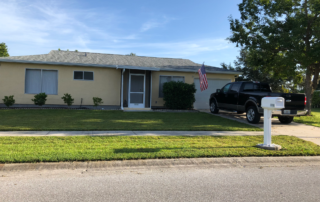You may be surprised to see a blog about Florida’s nesting birds here on a roofing blog. But the reality is that birds, while beautiful and fascinating, can wreak havoc on your roof. The spring season here in the Venice area means that local birds will be looking for safe, dry places to build their nests; and migratory birds will be stopping off on their way back north from the Caribbean islands, or traveling across the Gulf of Mexico.
Below are some of the birds we can expect to see during the spring (March through May), as well as some ways you can protect your roof from the damage they may cause.
Florida’s Returning Nesting Birds
Bird enthusiasts, or ornithologists, may be thrilled to hear the songs of the Carolina wren return in late March; and the sight of a northern cardinal or woodpecker is an exciting occasion. Spring also brings scarlet and summer tanagers, blue and rose-breasted grosbeaks, indigo buntings, and orchard and Baltimore orioles. All of these birds are looking for places to build a nest. Given the increase residential neighborhoods in the area, their natural habitat is often not sufficient for housing all of the returning avian families. This is when they turn to alternatives, typically finding eaves and attics a cozy choice.
Along South Florida’s beautiful beaches, there are species that require an undisturbed habitat to breed. The snowy plover, larger Wilson’s plover, royal terns and black skimmers have been forced to share their habitat with thousands of tourists, however. Although local authorities do their best to rope off and separate nesting areas, the people are still often too close for comfort. While many of these species have simply moved to offshore barrier islands, a few have begun to seek out quiet properties along the Bay.
Why Homeowner’s Should Care
Unfortunately, there are several problems with birds building nests in and around our homes.
Because they are looking for an inconspicuous place to raise their young as well as to protect themselves from predators, birds tend to look for small holes in the eaves or roofline to exploit. If the hole is not big enough for them to get through, they often peck away at it until they can fit through and get into your roof space or attic. This activity not only causes damage to the soffits, eaves or roof structure, but opens up an area of access vulnerability for other critters to explore. Birds will also often use roofing materials to build their nest – especially asphalt shingle. If they can manage to find a crack or tear, they will start ripping at the tile to break off pieces for their nest. This means your roof is losing some of its structural integrity, often exposing the underlayment. Over time, these areas can be more susceptible to leaks forming.
Birds nesting in the attic also may carry diseases, or contaminate your attic insulation. Particles can flow through your air conditioning system and cause illness, something no one wants.
Providing a Home for Nesting Birds
One of the best ways you can help nesting birds to safely care for their young while not ruining your attic is to give them an alternative. By hanging or erecting birdhouses designed for small birds – and providing straw, food, and water to make it even more attractive – you can draw the birds away from your home and into their own. In fact, you may even be inspired to make some landscaping changes to attract these colorful beauties to your yard, while giving them their own space.
Don’t forget to check around the perimeter of your home and seal up and possible entry points. You can place chicken wire over vents so as to protect your home without losing necessary air flow.
This season, be sure to have your roof inspected by a licensed roofing contractor before the rains of summer arrive. [company_name] will check your materials and roofing structure to make sure everything is intact, and inspect your attic and insulation as well. This year, enjoy Florida’s wildlife and birds, while keeping your roof safe.



